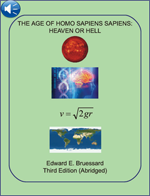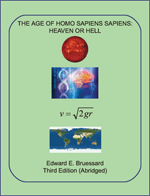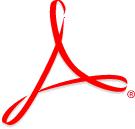2025 USA Measles Outbreak
All about Measles and Vaccines
Number of Elapsed Days Since the USA's 2025 Measles Outbreak for Reporting Beginning Friday, January 10, 2025:
The USA has been very fortunate from the standpoint that measles were all but eliminated throughout the country as of the year 2000 relative to all tallied global measles incidences. The 2025 resurgence of measles in the USA, in part, has been attributed to a general rise in skepticism about vaccines surrounding the misinformation and disinformation about the COVID-19 vaccines. Also, in part, the 2025 resurgence of measles in the USA has been attributed to various conspiracy theories linking vaccines to autism. As a result of these various anti-vaccine tendencies, more parents have been given the option of not getting their children vaccinated prior to attending school. With fewer children getting vaccinated, there is always the likelihood that more children will get infected by disease. There is always the risk that there will be some type of disease outbreak among school-attending children. Due to these kinds of anti-vaccine factors, there is an increased reluctancy or hesitancy in the USA against getting vaccinated as of the 2020's.
| Count | Week | Cases | Percent |
|---|---|---|---|
| 1 | 2000 | 85 | 1% |
| 2 | 2001 | 116 | 2% |
| 3 | 2002 | 44 | 1% |
| 4 | 2003 | 56 | 1% |
| 5 | 2004 | 37 | 1% |
| 6 | 2005 | 66 | 1% |
| 7 | 2006 | 55 | 1% |
| 8 | 2007 | 43 | 1% |
| 9 | 2008 | 140 | 2% |
| 10 | 2009 | 72 | 1% |
| 11 | 2010 | 63 | 1% |
| 12 | 2011 | 220 | 4% |
| 13 | 2012 | 55 | 1% |
| 14 | 2013 | 187 | 3% |
| 15 | 2014 | 667 | 11% |
| 16 | 2015 | 191 | 3% |
| 17 | 2016 | 86 | 1% |
| 18 | 2017 | 120 | 2% |
| 19 | 2018 | 381 | 6% |
| 20 | 2019 | 1274 | 21% |
| 21 | 2020 | 13 | 0% |
| 22 | 2021 | 49 | 1% |
| 23 | 2022 | 121 | 2% |
| 24 | 2023 | 59 | 1% |
| 25 | 2024 | 285 | 5% |
| 26 | 2025 | 1563 | 26% |
| Total | 1,563 | 100% | |
| Data as of October 8, 2025 Based on Centers for Disease Control and Prevention (CDC) | |||
Moreover, on the one hand, there are some USA residents who simply do not ascribe to getting vaccinated for various reasons such as religion, body purity, and a general distrust of the motives of researchers. On the other hand, there are either those USA residents who travel abroad, are exposed to measles, get infected, and, upon return from traveling, proceed to introduce measles into the USA population; or, there are foreign travelers or non-USA residents who travel to the USA and who perhaps are unknowing carriers of an infectious disease such as measles. These traveling non-USA residents proceed to introduce the infectious disease into the USA population. Foreign traveling is another mechanism for introducing measles into the USA population.
The truth of the matter about vaccines is this: Vaccines have been around for long period of time in history dating back to the 1700's. The truth of the matter about vaccines is this: Over the course of history, vaccines have proven to be safe and effective at combating infectious disease outbreaks and preventing the contraction and transmission of various infectious diseases. One only needs to look at the number of lives saved by vaccines over the decades and millennia to appreciate the utility and effectiveness of vaccines. See, for instance, the next graphic. It is rare, indeed, to read about someone dying from getting a vaccine. It is not unusual to read about the million of lives saved by vaccines. In terms of global declining cases of measles, the trends are all good in the charts below. See the next graphic for a view of the number of lives saved by vaccines in the USA alone.
Wikipedia.org provides a comprehensive list of infectious diseases. According to wikipedia.org, a vaccine exists to treat or prevent 37 of the infectious diseases listed by wikipedia.org. Here are the 37 infectious diseases for which there exists a vaccine.
- Anthrax
- Argentine hemorrhagic fever
- Brucellosis
- Chickenpox
- Cholera
- Coronavirus disease 2019 (COVID-19)
- Dengue fever
- Diphtheria
- Ebola hemorrhagic fever
- Haemophilus influenzae infection
- Hepatitis A
- Hepatitis B
- Hepatitis E
- Human papillomavirus (HPV) infection
- Influenza (flu)
- Japanese encephalitis
- Leptospirosis
- Malaria
- Measles
- Meningococcal disease
- Mpox
- Mumps
- Pertussis (whooping cough)
- Pneumococcal infection
- Poliomyelitis
- Q fever
- Rabies
- Rotavirus infection
- Rubella
- Shingles (Herpes zoster)
- Smallpox (variola)
- Subacute sclerosing panencephalitis
- Tetanus (lockjaw)
- Tick-borne encephalitis
- Tuberculosis
- Typhoid fever
- Yellow fever
Benjamin Franklin is credited with coining the phrase, "an ounce of prevention is worth a pound of cure." Obviously, prevention of infectious diseases is the preferred approach. According to wikipedia.org, many diseases and disorders can be prevented through adopting and adhering to practices such as "vaccinations, sanitation, proper nutrition, adequate exercise, and other self-care and public health measures…"
The World Health Organization (WHO) has provided a good synopsis of measles as seen in the following quotation:
Measles
Measles is a highly contagious viral disease. It remains an important cause of death among young children globally, despite the availability of a safe and effective vaccine.
While vaccination has prevented an estimated 60 million deaths between 2000–2023, measles is still common in many developing countries, particularly in parts of Africa and Asia. An estimated 107 500 people died from measles in 2023. The overwhelming majority (more than 95%) of measles deaths occur in countries with low per capita incomes and weak health infrastructures.
Member States in all WHO Regions have adopted measles elimination goals. WHO is the lead technical agency responsible for coordination of immunization and surveillance activities supporting all countries to achieve these goals.
Measles is transmitted via droplets from the nose, mouth or throat of infected persons. Initial symptoms, which usually appear 10–14 days after infection, include high fever, a runny nose, bloodshot eyes, and tiny white spots on the inside of the mouth. Several days later, a rash develops, starting on the face and upper neck and gradually spreading downwards.
Severe measles is more likely among poorly nourished young children, especially those with insufficient vitamin A, or whose immune systems have been weakened by HIV/AIDS or other diseases. The most serious complications include blindness, encephalitis (an infection that causes brain swelling), severe diarrhea and related dehydration, and severe respiratory infections such as pneumonia.
Routine measles vaccination for children, combined with mass immunization campaigns in countries with low routine coverage, are key public health strategies to reduce global measles deaths.
The measles vaccine has been in use since the 1960s. It is safe, effective and inexpensive. WHO recommends immunization for all susceptible children and adults for whom measles vaccination is not contraindicated. Reaching all children with 2 doses of measles vaccine, either alone, or in a measles-rubella (MR), measles-mumps-rubella (MMR), or measles-mumps-rubella-varicella (MMRV) combination, should be the standard for all national immunization programmes."
See Also: What to Know About Measles and Vaccines | Johns Hopkins | Bloomberg School of Public Health
History of Measles - Public Health - MSK Library Guides at Memorial Sloan Kettering Cancer Center
A Guide to Vaccines: Your Pathway to Lifelong Protection - Rhode Island Department of Health
Operations such as the ongoing activities of the World Health Organization (WHO), Centers for Disease Control and Prevention (CDC), European Centre for Disease Prevention and Control (ECDC), World Bank Group (WBG), Global Alliance for Vaccines and Immunization (GAVI), and the Bill & Melinda Gates Foundation (BMGF)—alongside many, many others—stand at the forefront of the global battle against infectious diseases. Their disease-related activities are endeavoring to provide vaccines to all of humankind. The Essential Programme on Immunization (EPI) is representative of the global attempt to provide vaccines to all of humankind. Under 47th USA President Donald Trump, the USA has withdrawn from WHO as of 2025 and has substantially reduced its contributions to humanitarian efforts around the world such as the humanitarian support provided by USAID. Yet, there remain countless individuals, charities, philanthropic organizations, NGOs, missionaries, donor-governments, etc. all over the world who are committed to and continue to do this good work. Thank you for your commitment and your continuing efforts.
The following two slideshows serve to augment WHO's above-quoted synopsis about measles, in particular, and vaccines, in general.
Slideshow 1 of 2: Measles/Vaccines Infographics
Slideshow 2 of 2: Measles/Vaccines Videos
Scroll to Top of Page
The 2025 USA Measles Outbreak
The measles spotlight is on the USA here not because, in 2025, there is a sudden explosive growth in the number of measles cases in the USA compared to other countries around the world. Rather, the measles spotlight is on the USA in this instance due chiefly to USA President Donald Trump's second administration in 2025. President Trump's confirmed Secretary of the USA Department of Health and Human Services (HHS) and his first choice to lead the Centers for Disease Control and Prevention (CDC) have expressed some less than receptive views about vaccines (that is, Robert F. Kennedy, Jr. and Dr. David Weldon, respectively). Potentially, government officials in high offices (such as the heads of HHS and CDC) can adversely influence not only attitudes and opinions in the USA about getting vaccinated but also they can adversely impact attitudes and practices about vaccines around the world given their humongous public platforms with ready access to media outlets. As a result of this 2025 lukewarm or nonchalant embrace of vaccines by applicable leaders in high USA government offices, measles cases in the USA can be expected to start rising.
The following map, tables, and charts provide an overview of the 2025 USA measles outbreak. For USA residents who wish to get vaccinated, please consult vaccines.gov to locate vaccine providers. For USA residents who wish to obtain a copy of their children's vaccine records, please consult your state's IIS (Immunization Information System) office.
| Count | State | Cases | Percent | ||
|---|---|---|---|---|---|
| 1 | Alabama (AL) | 1 | 0.1% | ||
| 2 | Alaska (AK) | 3 | 0.2% | ||
| 3 | Arizona (AZ) | 63 | 4.0% | ||
| 4 | Arkansas (AR) | 8 | 0.5% | ||
| 5 | California (CA) | 21 | 1.3% | ||
| 6 | Colorado (CO) | 27 | 1.7% | ||
| 7 | Florida (FL) | 6 | 0.4% | ||
| 8 | Georgia (GA) | 10 | 0.6% | ||
| 9 | Hawaii (HI) | 2 | 0.1% | ||
| 10 | Idaho (ID) | 7 | 0.4% | ||
| 11 | Illinois (IL) | 12 | 0.8% | ||
| 12 | Indiana (IN) | 9 | 0.6% | ||
| 13 | Iowa (IA) | 8 | 0.5% | ||
| 14 | Kansas (KS) | 90 | 5.7% | ||
| 15 | Kentucky (KY) | 14 | 0.9% | ||
| 16 | Louisiana (LA) | 2 | 0.1% | ||
| 17 | Maryland (MD) | 3 | 0.2% | ||
| 18 | Michigan (MI) | 28 | 1.8% | ||
| 19 | Minnesota (MN) | 20 | 1.3% | ||
| 20 | Missouri (MO) | 7 | 0.4% | ||
| 21 | Montana (MT) | 32 | 2.0% | ||
| 22 | Nebraska (NE) | 1 | 0.1% | ||
| 23 | New Jersey (NJ) | 10 | 0.6% | ||
| 24 | New Mexico (NM) | 100 | 6.4% | ||
| 25 | New York (NY) | 24 | 1.5% | ||
| 26 | North Carolina (NC) | 1 | 0.1% | ||
| 27 | North Dakota (ND) | 36 | 2.3% | ||
| 28 | Ohio (OH) | 42 | 2.7% | ||
| 29 | Oklahoma (OK) | 17 | 1.1% | ||
| 30 | Oregon (OR) | 1 | 0.1% | ||
| 31 | Pennsylvania (PA) | 16 | 1.0% | ||
| 32 | Rhode Island (RI) | 1 | 0.1% | ||
| 33 | South Carolina (SC) | 11 | 0.7% | ||
| 34 | South Dakota (SD) | 12 | 0.8% | ||
| 35 | Tennessee (TN) | 7 | 0.4% | ||
| 36 | Texas (TX) | 801 | 51.1% | ||
| 37 | Utah (UT) | 54 | 3.4% | ||
| 38 | Vermont (VT) | 2 | 0.1% | ||
| 39 | Virginia (VA) | 4 | 0.3% | ||
| 40 | Washington (WA) | 11 | 0.7% | ||
| 41 | Wisconsin (WI) | 36 | 2.3% | ||
| 42 | Wyoming (WY) | 9 | 0.6% | ||
| Total | 1,569 | 100.00% | |||
| Data as of October 10, 2025 (Based on bruessard.info's Self-Tracking Compilation by State; See Links in Above Map by Clicking Red Stars) But See Also: U.S. Measles Tracker and U.S. Measles Map (ArcGIS). | |||||
| Count | Week | Cases | Week-over-Week Percent Change | Week-over-Week Count Change | Cumulative Cases |
|---|---|---|---|---|---|
| 1 | 1/4/2025 | 2 | 2 | ||
| 2 | 1/11/2025 | 1 | -100% | -1 | 3 |
| 3 | 1/18/2025 | 1 | 0% | 0 | 4 |
| 4 | 1/25/2025 | 11 | 91% | 10 | 15 |
| 5 | 2/1/2025 | 19 | 42% | 8 | 34 |
| 6 | 2/8/2025 | 27 | 30% | 8 | 61 |
| 7 | 2/15/2025 | 65 | 58% | 38 | 126 |
| 8 | 2/22/2025 | 85 | 24% | 20 | 211 |
| 9 | 3/1/2025 | 75 | -13% | -10 | 286 |
| 10 | 3/8/2025 | 90 | 17% | 15 | 376 |
| 11 | 3/15/2025 | 84 | -7% | -6 | 460 |
| 12 | 3/22/2025 | 105 | 20% | 21 | 565 |
| 13 | 3/29/2025 | 89 | -18% | -16 | 654 |
| 14 | 4/5/2025 | 115 | 23% | 26 | 769 |
| 15 | 4/12/2025 | 74 | -55% | -41 | 843 |
| 16 | 4/19/2025 | 86 | 14% | 12 | 929 |
| 17 | 4/26/2025 | 48 | -79% | -38 | 977 |
| 18 | 5/3/2025 | 49 | 2% | 1 | 1026 |
| 19 | 5/10/2025 | 35 | -40% | -14 | 1061 |
| 20 | 5/17/2025 | 25 | -40% | -10 | 1086 |
| 21 | 5/24/2025 | 55 | 55% | 30 | 1141 |
| 22 | 5/31/2025 | 41 | -34% | -14 | 1182 |
| 23 | 6/7/2025 | 24 | -71% | -17 | 1206 |
| 24 | 6/14/2025 | 20 | -20% | -4 | 1226 |
| 25 | 6/21/2025 | 29 | 31% | 9 | 1255 |
| 26 | 6/28/2025 | 35 | 17% | 6 | 1290 |
| 27 | 7/5/2025 | 18 | -94% | -17 | 1308 |
| 28 | 7/12/2025 | 15 | -20% | -3 | 1323 |
| 29 | 7/19/2025 | 12 | -25% | -3 | 1335 |
| 30 | 7/26/2025 | 17 | 29% | 5 | 1352 |
| 31 | 8/2/2025 | 11 | -55% | -6 | 1363 |
| 32 | 8/9/2025 | 11 | 0% | 0 | 1374 |
| 33 | 8/16/2025 | 20 | 45% | 9 | 1394 |
| 34 | 8/23/2025 | 37 | 46% | 17 | 1431 |
| 35 | 8/30/2025 | 32 | -16% | -5 | 1463 |
| 36 | 9/6/2025 | 18 | -78% | -14 | 1481 |
| 37 | 9/13/2025 | 32 | 44% | 14 | 1513 |
| 38 | 9/20/2025 | 15 | -113% | -17 | 1528 |
| 39 | 9/27/2025 | 19 | 21% | 4 | 1547 |
| 40 | 10/4/2025 | 12 | -58% | -7 | 1559 |
| 41 | 10/11/2025 | 4 | -200% | -8 | 1563 |
| Total | 1,563 | ||||
| Data as of October 8, 2025 Based on Centers for Disease Control and Prevention (CDC) | |||||
Concerning the above week-over-week measles cases growth chart, there are several ways to view progress in the quest to alleviates the USA's 2025 measles outbreak. One way to view progress is when total number of measles cases remains unchanged week after week. Another way to view progress is for the growth line to remain constant (or flat as in the shape of a straight horizontal line) in subsequent weeks.
In comparing year-over-year USA cases of measles during the 2020's, the CDC recorded a total of 12, 49, 121, 59, and 285 measles cases in the USA for the years 2020, 2021, 2022, 2023, and 2024, respectively. The year 2025 remains ongoing. Keep in mind that the rumors and conspiracy theories about use of the COVID-19 vaccine began to circulate and proliferate after the COVID-19 vaccine was developed, administered, and widely promoted. On Friday, 11-December-2020, the FDA issued Emergency Use Authorization (EUA) for widespread use of the Pfizer-BioNTech COVID-19 vaccine on the population at large. Next, on Monday, 14-December-2020, the first EUA-approved Pfizer-BioNTech COVID-19 vaccine shot or jab was given to Sandra Lindsay. This COVID-19 vaccine information is provided here (alongside this measles discussion) only to give context for the period in time when the vaccine-scare-tactics began to gain traction or new life in the USA. Trust the science and not all of the negative, anti-vaccine conspiracy theories; the evidence is clear and overwhelming that vaccines are safe and vaccines save lives.
Scroll to Top of Page
Homage to Dr. Maurice Hilleman
I wish to conclude this measles discussion by paying homage to Dr. Maurice Hilleman. He has come to be known as the father of modern vaccines. As the history-of-vaccines graphic below illustrates, there were many vaccine pioneers and breakthroughs throughout the centuries to occur before the emergence of Maurice Hilleman. More importantly, the two charts below show the staggering number of lives estimated to have been saved by vaccines. Many of the millions of lives saved can be attributed to the work and ingenious tutelage of none other than Dr. Maurice Hilleman. Equally important, many more millions of humans have been spared from suffering from the scourge of infectious diseases; they are healthy and vivacious today due to the vaccines developed by Dr. Maurice Hilleman. Adhering to the vaccine schedules is vitally important.

In total, wikipedia.org lists over 200 infectious diseases. It should be noted that infectious diseases such as the 37 listed above are distinct from non-infectious diseases. Infectious diseases are caused by microorganisms infecting the body whereas non-infectious diseases are not. Causes of non-infectious diseases include factors such as genetics, aging, and even lifestyle to some degree. Some examples of non-infectious diseases include heart disease, cancer, diabetes, Alzheimer's disease, asthma, and so on. So, for the next Dr. Maurice Hilleman out there in the world, there remain lots of infectious diseases waiting to be pursued, tackled, subdued, arrested, and eradicated with vaccines.
Scroll to Top of Page







